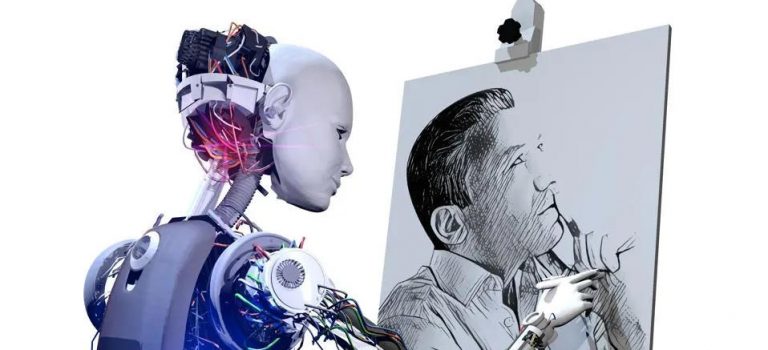Source: Forbes.
AI has seeped into every corner of our lives, transforming everything from healthcare to entertainment. It’s causing a significant shake-up in the creative industry, urging artists to rethink their careers and roles in this evolving world. AI is not just showcasing its capabilities; it’s actively participating in the creative industry. It’s creating beautiful artwork, designing innovative products, composing music and even writing award-winning novels.
Consider AIVA, an AI music composer, for instance. It’s creating symphonies that resonate with our emotions—an AI-created artwork, ‘Portrait of Edmond de Belamy,’ sold for $432,500. Then there’s OpenAI’s GPT-4, authoring entire books. Tools like Autodesk’s Project Dreamcatcher are also revolutionizing industrial design. Because of AI, the way we make and enjoy creative content is changing fast. AI is like a super-efficient artist who never sleeps, constantly developing new ideas.
Artists’ Struggles in an AI-Driven World
As a seasoned art major and marketing instructor at Texas Christian University, my journey with AI in the creative landscape has been nothing short of transformative. Initially, I held a firm belief in the irreplaceability of human creativity. AI challenged my beliefs about art—a human endeavor defined by emotion, experience and cultural context.
The struggle of being a starving artist isn’t new. But AI’s takeover of many creative tasks has made this challenge even more daunting. AI-powered tools can produce content much faster and more affordably than humans, making competition fierce for artists. These tools continually improve, potentially leading to further wage decline, fewer job opportunities and increased financial instability.
Is Collaboration Possible?
As I explore this new digital frontier of AI-generated art, my views continue to evolve. The future remains uncertain, but AI will likely play an increasingly prominent role in art and creativity. As an artist and educator, I consider AI a tool that can expand possibilities for human expression. My journey from skepticism to a cautious acceptance of AI art mirrors society’s grappling with these technologies. AI creative capabilities are rapidly advancing in music, writing, visual arts, marketing and beyond. Adaptation will be required, but need not exclude human imagination and purpose.
Similar to how platforms like WordPress, Godaddy and Wix enable non-developers to create websites, the use of AI may contribute to art like web platforms influenced the growth of the internet. Moreover, the platforms allowed traditional developers to continue learning and developing new tools and features in the web space. Rather than erasing real art, AI may liberate real artists to focus more on meaningful messaging and growth.
The future remains uncertain but holds the possibility for collaboration and coexistence between human and machine creativity. As an artist, I approach it with openness, wisdom and care. The path ahead promises to challenge definitions of art. Still, human imagination need not be overwritten if we recognize AI for what it is—a tool to expand possibilities.








